Sensor Sweep: Sonic Adventure, L. Sprague de Camp, John Buscema, Star Wars Holiday Special
Monday , 1, January 2024 Sensor Sweep Leave a commentReading (Free Beacon): My first vague inklings of sexuality came from![]() Robert E. Howard’s Conan books—but, then, my first creeping sense of a malevolent supernatural, like a gateway drug for H.P. Lovecraft, came from those Conan stories, too. Edgar Rice Burroughs’s Tarzan of the Apes, Arthur Conan Doyle’s The Lost World: a dive into the genre of lost primitivism that began with Rudyard Kipling’s Mowgli in the first Jungle Book.
Robert E. Howard’s Conan books—but, then, my first creeping sense of a malevolent supernatural, like a gateway drug for H.P. Lovecraft, came from those Conan stories, too. Edgar Rice Burroughs’s Tarzan of the Apes, Arthur Conan Doyle’s The Lost World: a dive into the genre of lost primitivism that began with Rudyard Kipling’s Mowgli in the first Jungle Book.
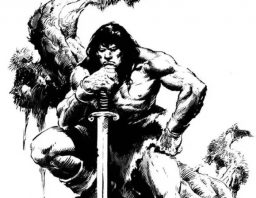 Comic Books (Dark Worlds Quarterly): In Savage Sword of Conan – The Original Marvel Years Omnibus v01 (2019), Roy Thomas tells how John Buscema did not like Alfred Alcala’s incredible inking of his pencils. This stunned me. I LOVE Alcala’s work on SSOC. I had heard somewhere else (I don’t recall where but also according to Roy Thomas) that Big John did not care for Ernie Chan’s inking either!
Comic Books (Dark Worlds Quarterly): In Savage Sword of Conan – The Original Marvel Years Omnibus v01 (2019), Roy Thomas tells how John Buscema did not like Alfred Alcala’s incredible inking of his pencils. This stunned me. I LOVE Alcala’s work on SSOC. I had heard somewhere else (I don’t recall where but also according to Roy Thomas) that Big John did not care for Ernie Chan’s inking either!
Fiction (Goodman Games): Did you know that L. Sprague de Camp coined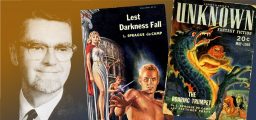 the terms “extraterrestrial” and “E.T.”? It’s true! While the noun existed before de Camp, he was the first to use it to describe alien life in a 1939 article for Astounding Science Fiction. This is one of many examples of how De Camp’s impact on the genres of science fiction and fantasy far exceed his level of contemporary fame. Read More
the terms “extraterrestrial” and “E.T.”? It’s true! While the noun existed before de Camp, he was the first to use it to describe alien life in a 1939 article for Astounding Science Fiction. This is one of many examples of how De Camp’s impact on the genres of science fiction and fantasy far exceed his level of contemporary fame. Read More
 I have been reading Robert Bloch for over forty years. I never wrote to him like I did to Fritz Leiber, Donald Wandrei, Carl Jacobi, and Hugh Cave. I first discovered him in that all so influential anthology Tales of the Cthulhu Mythos. I still like rereading a story by him from Weird Tales here and there.
I have been reading Robert Bloch for over forty years. I never wrote to him like I did to Fritz Leiber, Donald Wandrei, Carl Jacobi, and Hugh Cave. I first discovered him in that all so influential anthology Tales of the Cthulhu Mythos. I still like rereading a story by him from Weird Tales here and there.
I picked up his novel The Kidnapper a few years back at a used bookstore. It is another book that I needed to scratch off the “to be read” list. This was Bloch’s third novel and published by Lion Books in 1954 as The Kidnaper. Lion Books was an imprint of Martin Goodman who published pulps, men’s magazines, and comic books that would become Marvel.
This is very much a 1950s crime story told in first person. Steve Collins (real name Stanley Kolischek) is a low level criminal back in Milwaukee after a filling station hold up job in Florida. He takes a night shift job at a tool & dye maker. He befriends the nebbish Leo Schumann and gets himself a 20 year old girlfriend in the form of Mary Adams. Mary is a maid for a very wealthy business owner. Steve first thinks up a job to rob the mansion of jewelry when Mary’s boss and wife are gone on vacation. That gets thrown out as the vacation plans change. Read More
Sensor Sweep: Dungeon, Donald Wandrei, Tolkien Christmas Cards, Texas Wind
Monday , 25, December 2023 Sensor Sweep Leave a commentAppendix N (Goodman Games): We’ve talked a lot about Fritz Leiber, whose birthday we’re celebrating today, over the last few years. Leiber, born December 24th, 1910, is most widely known among gamers as the man responsible for the fantastic Fafhrd and Gray Mouser stories. In the years running up to DCC Lankhmar, a lot of ink has been spilled discussing Leiber’s most famous creation.
whose birthday we’re celebrating today, over the last few years. Leiber, born December 24th, 1910, is most widely known among gamers as the man responsible for the fantastic Fafhrd and Gray Mouser stories. In the years running up to DCC Lankhmar, a lot of ink has been spilled discussing Leiber’s most famous creation.
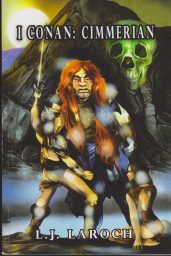 Conan (Sprague de Camp Fan): It has been said that any Conan story not written by Robert E. Howard is fan fiction. I agree with that but “fan fiction” doesn’t necessarily equal bad fiction. And there is the distinction between authorized and unauthorized continuations. This book is unauthorized fan fiction. The publisher is Dorrance Publishing. You might have seen their ads on the internet. As vanity presses go, they are one of the oldest (established in 1920) and appear to be fairly successful.
Conan (Sprague de Camp Fan): It has been said that any Conan story not written by Robert E. Howard is fan fiction. I agree with that but “fan fiction” doesn’t necessarily equal bad fiction. And there is the distinction between authorized and unauthorized continuations. This book is unauthorized fan fiction. The publisher is Dorrance Publishing. You might have seen their ads on the internet. As vanity presses go, they are one of the oldest (established in 1920) and appear to be fairly successful.
Pulp (Dark Worlds Quarterly): 1924-1925 proved a good two years if you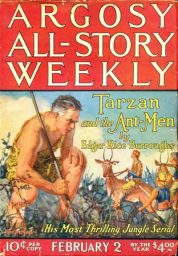 liked novel serials with four by Edgar Rice Burroughs, two by Ralph Milne Farley and singles by Ray Cummings, Rufus King and Wil McMorrow. Several of these would become paperback perennials for ACE Books. For Semi-Dual fans, there was another installment of the world’s most famous ghost buster. The short stories are mixed bag with familiar names like Paul Anderson, Robert W. Sneddon, B. Wallis, E. Charles Vivian and Fred Jackson.
liked novel serials with four by Edgar Rice Burroughs, two by Ralph Milne Farley and singles by Ray Cummings, Rufus King and Wil McMorrow. Several of these would become paperback perennials for ACE Books. For Semi-Dual fans, there was another installment of the world’s most famous ghost buster. The short stories are mixed bag with familiar names like Paul Anderson, Robert W. Sneddon, B. Wallis, E. Charles Vivian and Fred Jackson.
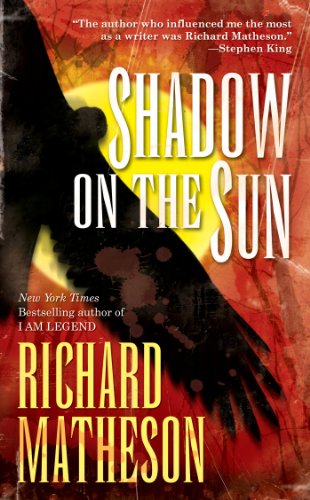 I enjoy a good weird western. Somehow Richard Matheson’s Shadow on the Sun got past me when first released in 1994. The odd part is I was reading the Richard Matheson westerns and enjoyed them. Journal of the Gun Years was great, The Gun Fight was competent but nothing special, the collection By the Gun collected Matheson’s forays into magazine western fiction from the 1950s.
I enjoy a good weird western. Somehow Richard Matheson’s Shadow on the Sun got past me when first released in 1994. The odd part is I was reading the Richard Matheson westerns and enjoyed them. Journal of the Gun Years was great, The Gun Fight was competent but nothing special, the collection By the Gun collected Matheson’s forays into magazine western fiction from the 1950s.
I picked up the Tor reprint of Shadow on the Sun sometime the past few years (used) and recently pulled it off the shelf to read. Read More
Science Fiction and Fantasy New Releases: 23 December 2023
Saturday , 23, December 2023 Uncategorized Leave a commentEvery week, the Castalia House Blog spotlights some of the many new releases in independent, pulp, and web novel-influenced science fiction and fantasy.
During a routine territory skirmish with the Hypirions, an alien race hostile toward humans, a mysterious third party attacks. With no other options, Commander Shawn Pace and his human soldiers suspend their conflict with the Hypirions and unite against the new threat.
As a prime witness and survivor, Pace is tasked with discovering the source of this menacing intrusion and helping to bring it to an end. Leading a unique squad, including a few genetically altered humans he’d rather omit from his team, Pace delves deep into the heart of an enigmatic galaxy far larger and more horrifying than he could have ever conceived.
As each new dreadful discovery only leads to more questions, Pace begins to recognize a malevolent reality looming on the galactic horizon.
Can Pace and his team unravel the truth and stop this force before it spreads out of control?
Or has the emergence of this new threat already condemned the galaxy?
Years after the first interstellar colony ship departed from Earth, a contagion known as the Vemus spread across all mammalian life on the planet, giving rise to monstrosities that nearly wiped out all humanity.
Hundreds of years later, the interstellar colonists sent an expeditionary force back to Earth to help the survivors. Among the refugees were a cadre of human survivors who had adapted to resist the Vemus by becoming a hybrid of both.
Old war machines quarantined the Earth, preventing refugees from returning. Lieutenant Ethan Gates nearly died to save the colonial fleet sent to destroy the blockade. He survived by becoming a hybrid, and now they aren’t sure he could be trusted.
After months of being sidelined, Ethan finally returns to active duty, and makes an unexpected discovery…evidence hinting at the origins of the Vemus.
When detractors hinder unification efforts, causing treacherous divides among Earth’s refugees, a much larger threat looms in the shadows.
Captured and sentenced to spend the rest of his life mining asteroids, Caleb’s odds of stopping the Legion and finding his way home appear slim. After being transferred to the most dangerous and deadly assignment in the Belt, there’s a good chance his punishment may be completed sooner than he imagined.
But with the fate of the galaxy at stake, he isn’t about to let a little thing like incarceration keep him from his goals. Where one fight ends, another begins…
…and Caleb will never, ever back down until the mission is complete. Read More
SUPERVERSIVE: “Godzilla Minus One” Earns all the Hype!
Tuesday , 19, December 2023 Uncategorized Leave a commentWhat a difference a month makes. I watch nothing in theaters all year besides a few limited release Miyazaki movies and “Sound of Freedom”, and now I’ve seen three movies in the past three weeks. John C. Wright already reviewed “The Shift” and I have little to add, and I reviewed Miyazaki’s “How do you Live?” last week. That leaves me with one more film to talk about, “Godzilla Minus One”.
(Side note: If you have noticed the running theme that none of these movies are from Hollywood, well, let’s just say that’s not a coincidence.)
To give you my background, I had seen a grand total of three Godzilla movies before this point, the three fairly mediocre Godzilla anime films. I knew next to nothing about the franchise and the sum total of monster/kaiju flicks I had seen outside of that amounted to the (pretty good) Peter Jackson “King Kong” and (the less good) “Kong: Skull Island”. That’s it. To be frank, I would not have seen this except that every movie critic I even remotely like and respect were over the moon over it.
How was it? In short: It’s the best movie I’ve seen in theaters since “Interstellar”, nine years ago. It’s one of my favorite movies of all time. Keep in mind that I saw this AFTER seeing the new Miyazaki film.
“Godzilla Minus One” follows Kirito, a kamikaze pilot who can’t bring himself to die for the cause and fakes engine trouble to get out of doing his duty. While on an island getting his plane checked out Godzilla crashes the party. Kirito is given the chance to at least do a bit of damage but freezes, and he and the mechanic who worked on his plane end up as the only survivors.
Alive but stuck with crippling survivor’s guilt and intense PTSD, Kirito returns home and against his inclinations ends up taking in and supporting Noriko, a young woman with no family and no place to go, and the baby she is raising, Akiko. Though Kirito can’t bring himself to fully open up about all of his trauma the three of them form a bond and come to care for each other.
It’s strange, because I am normally quite open to spoiling films in order to discuss them fully, but this feels like the sort of special experience that really shouldn’t be spoiled. It’s not that the movie is doing anything new. Kirito’s arc is a classic one of overcoming cowardice and shame and finding a reason to live. Found families are certainly not new (though considering it’s a found NUCLEAR family this is probably the best version of that trope I’ve ever seen). It’s all been done before and will be done again.
What sets it apart is how well done it all is. I can tell you with zero exaggeration that if Godzilla was completely removed from the movie and this was a character-driven drama about a man recovering from his time in the war, I would still have enjoyed it just as much – which just makes the fact that the monster scenes are ALL, each one, absolutely fantastic a simply colossal cinematic achievement.
What to talk about? How about the fact that I liked every single character in the film – all of them. EVERY character was interesting, every character was memorable, I was rooting for all of them.
How about the acting? The acting was fantastic. I have heard that the lead may get some awards buzz, and to that I say, well deserved.
But really. Think about this for a second. There is awards buzz for the lead actor in a Godzilla movie!
Let’s just boil down why this movie was so great – it did everything Hollywood wouldn’t do. This was a story about MEN, dealing with trauma from war, choosing how to live. The one major adult female character in this movie plays a role that is as feminine in nature as you could possibly imagine. This is not to say that she is not important, or does not have her own arc, or does not affect the story, but the way she affects the story is in an old-fashioned feminine way – in other words, she motivates and supports the male main character and cares for a child.
This was primarily a story about masculine men doing masculine, manly, heroic things.
And – this is a key point, totally at odds with modern Hollywood – there is no criticism of these men for being men. Their struggles and sacrifices, their failures and their hard-won successes, are played as seriously as a Shakespearean tragedy.
And it’s awesome.
I haven’t even MENTIONED the brilliant, Jaws-inspired action scenes, or how insane and impactful Godzilla’s atomic breath is, or the excellent overall special effects, but all of this needs to be thrown into the mix as well when discussing what makes this movie so damn good.
Is there anything wrong with it? Well, people sometimes criticize the ending for being slightly contrived. On one hand, I sort of get it. On the other hand, sometimes it feels like the sort of person who criticizes that ending is the same sort of person who thinks that the Captain shouldn’t have converted at the end of “Brideshead Revisited” – in other words, people who don’t like to see victory portrayed in fiction.
Will things work out that all the time? No, of course not. But sometimes I want to live in a world where suffering is met with relief, trauma with healing, and yes, even miracles can turn around the worst situations. But it’s not enough to want that. A movie needs to MAKE me want that for the characters, and make me believe it when it happens.
That is what this movie does.
This is as highly recommended as I can make it.
Sensor Sweep: Jagged Alliance 2, Baldur’s Gate, Michael Moorcock, Endless Quest
Monday , 18, December 2023 Sensor Sweep Leave a commentEdgar Rice Burroughs (ERB Zine): Edgar Rice Burroughs admired fellow-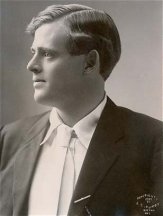 author Jack London enormously. Following the amazing success of his own early writings, ERB’s ambition was to become a rancher-writer, modeling his life on the one that Jack London had pursued and then abruptly lost due to his sudden death in 1916. In fact, Burroughs and his family were wintering in California when they learned of London’s death. The two authors had never met or corresponded but Ed was deeply moved by London’s passing.
author Jack London enormously. Following the amazing success of his own early writings, ERB’s ambition was to become a rancher-writer, modeling his life on the one that Jack London had pursued and then abruptly lost due to his sudden death in 1916. In fact, Burroughs and his family were wintering in California when they learned of London’s death. The two authors had never met or corresponded but Ed was deeply moved by London’s passing.
 Fantasy (Goodman Games): On the 18th of December, we celebrate the birthday of Michael Moorcock—a big writer with big ideas (regardless of what he thought a handful of decades ago). It’s difficult to rank Moorcock’s diverse achievements in terms of importance or influence. He’s impacted gaming through his Elric stories, he’s been a prolific writer of the Eternal Champion and Multiverse themes, he’s been an influential editor that helped change (dare I say, “improve”) the face of Science Fiction, he’s written comics, and he’s written lyrics for and performed with major rock bands!
Fantasy (Goodman Games): On the 18th of December, we celebrate the birthday of Michael Moorcock—a big writer with big ideas (regardless of what he thought a handful of decades ago). It’s difficult to rank Moorcock’s diverse achievements in terms of importance or influence. He’s impacted gaming through his Elric stories, he’s been a prolific writer of the Eternal Champion and Multiverse themes, he’s been an influential editor that helped change (dare I say, “improve”) the face of Science Fiction, he’s written comics, and he’s written lyrics for and performed with major rock bands!
Robert E. Howard (Sprague de Camp Fan): Robert E. Howard wrote stories of fighting men. His knowledge of weapons came from careful study for the most part. This was needed for the type of fiction he created. He also had practical experience with swords, knives, and guns. Let’s forgo guns for this article and talk about his collection of swords and knives. Read More
of fighting men. His knowledge of weapons came from careful study for the most part. This was needed for the type of fiction he created. He also had practical experience with swords, knives, and guns. Let’s forgo guns for this article and talk about his collection of swords and knives. Read More
David Drake died this past Sunday on December 10th at age 78. I had read that he had Parkinson’s disease a couple years ago. He mentioned in his November newsletter of having mini-strokes.

He has been a part of my reading life the past 40 years. I first heard of him looking at the Tor/Pinnacle paperback From the Heart of Darkness in Fall 1983. The reason I had looked at it was Karl Edward Wagner wrote the introduction which I read in the old Atlantic Books on Forbes Ave in the Oakland section of Pittsburgh. I had read the Warner reprints of Wagner’s “Kane” paperbacks in the summer of 1983. My limited discretionary income as a college student limited my taking a chance on an author I had never read before despite Wagner’s introduction.
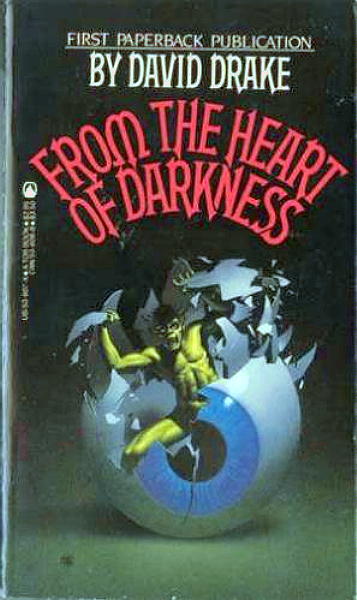
I did read Drake around two months later. I had picked up a copy of Sword Against Darkness (Zebra Books) which contained “Dragon’s Teeth.” It was one of my favorite stories from the anthology (along with Richard L. Tierney’s “The Ring of Set”). I got From the Heart of Darkness used around seven months later. I also read more of the Vettius and Dama stories in Swords Against Darkness III, Nameless Places, Giants, Year’s Best Horror along the way. Read More
Science Fiction and Fantasy New Releases: 16 December 2023
Saturday , 16, December 2023 Uncategorized Leave a commentEvery week, the Castalia House Blog spotlights some of the many new releases in independent, pulp, and web novel-influenced science fiction and fantasy.
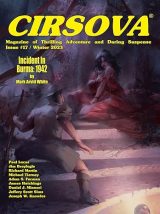 Cirsova #17/Winter 2023 – edited by P. Alexander
Cirsova #17/Winter 2023 – edited by P. Alexander
Tales of heroic adventure and daring suspense that include:
Nick’s crew were a solid heist team, but their successes have caught the attention of the Czar! Now they’re being taken out one-by-one by the Czar’s unstoppable goon!
Rab is running out of time! His Financial Seconds are ticking away until his body is reclaimed! Can his high-powered Brain OS and cybernetic personal assistant Alice get him through the day, or will high costs and rising prices cost Rab his life?!
On the verge of victory over Rhygir, Kat’s army has been destroyed by Fedai reinforcements! Rhygir has barely enough troops to hold Alness, but Kat is missing! The saga of the Mongoose and Meerkat concludes in this final chapter!
“I can’t juggle starships. I make the ones who can.”
The battle with the Iron Legion has left The Last Horizon battered and broken, drifting in space. Varic needs an exceptional Engineer to fix his ship, and there’s only one person for the job: Mell, the master Aether Technician.
But first, they have to break her out of prison.
Mell has been captured by the Advocates, a group of super-powered vigilantes who dominate their corner of the galaxy. They are led by Starhammer, an invincible champion with a personal obsession with Mell.
The Last Horizon may be crewed by the greatest heroes in the galaxy, but even they have to be careful with Starhammer. Every time he survives a battle, he grows stronger.
In another life, Varic saw the end of that road. If he lets Starhammer become too powerful, the galaxy is doomed.
A smuggler in the wrong place. An ancient alien technology. Now, everyone is after him.
Kai Fletcher thought he could go straight, until he couldn’t. And when his last “last” job goes wrong, he finds himself stowed away in a starship belonging to an alien crime syndicate.
Forced into servitude to pay the debt for passage off world, Kai bargains with the syndicate. All he has to do is help them rob the Vakness Empire, the most powerful alien empire in known space, and he gets to go home.
Easy Peasy. Until it isn’t.
Planning the heist, Kai discovers that the Vakness Empire has stolen ancient alien technology that will allow them to achieve their dream of ruling over all other sentient species. He’s never been a good guy, but even he has limits.
Hunted by both the Empire, and the syndicate, he manages to get on the wrong side of everyone in the galaxy who wants the discovery for themselves.
The secret location of the Vanguard Islands is no longer a secret . . .
Tired from years of fighting, Xavier passes the crown to a younger Hell Diver, Kade Long, and then sets off on the Sea Wolf with Magnolia to find Michael and his family. But the journey will push them both to their limit.
On the damaged airship Vanguard, Michael and crew are running out of water and must dive to a new location before attempting the perilous voyage across the Atlantic to a new home.
Back at the Vanguard Islands, King Kade hurries to prepare the rigs’ defenses against the Forerunner and his Knights of the Coral Castle. Fearing that X won’t return with the airship in time, Kade sends the elite Barracudas on a mission to find an aircraft that will give the Islands a fighting chance against the knights.
In the penultimate Hell Diver book, the survivors travel skewed and far-flung paths, but soon those paths will converge. The journey is almost over, so strap in for the last dives.
SUPERVERSIVE Review: “How do you Live?”, directed by Hayao Miyazaki
Tuesday , 12, December 2023 Uncategorized 2 Comments
(The original Japanese title is perfectly comprehensible when translated to English and far superior, I’m not using the stupid title “The Boy and the Heron”).
After writing a full retrospective on Miyazaki’s filmography, it was quite the surreal experience to walk into a theater and actually watch a new Miyazaki movie on the day of its release.
I’ll lay my biases on the table here. I am a Miyazaki fanboy. I think he’s the greatest living director and one of the greatest directors of all time. I am of the opinion that he doesn’t have any truly bad films (the closest being “Ponyo”), multiple classics, and three masterpieces, “Princess Mononoke”, “Spirited Away”, and “The Wind Rises”.
I had been following this movie since its announcement, and instead of going through the whole history up to now, I’ll give a brief plot synopsis and my thoughts:
In the midst of WWII Mahito’s mother, who works in a hospital, dies in a fire in Tokyo; though it is not stated directly it is heavily implied this is due to the American firebombing of Tokyo.
Within one year Mahito’s father has remarried and his new wife is pregnant. The new wife is Mahito’s Aunt Natsuko, his mother’s sister. Though Mahito tries his best to be polite and respectful, he’s clearly uncomfortable with her and misses his mother badly.
After moving to a home near his father’s factory, his mother’s ancestral home, strange things start happening around Mahito. A gray heron seems to follow him around the property. And he tells Mahito something strange: Mahito’s mother might still be alive…
From this point forward it is going to be very hard to actually describe the plot, because the movie is so bizarre, even for Miyazaki. Strange stories surround a great-grand-Uncle and a mysterious tower on the edge of the property, and I don’t think it’s much of a spoiler to say that the gray heron leads him there and it ends up being the entrance to a fantastical, magical world.
Where to even start with this movie? I suspect it will take many re-watches to fully appreciate, as did “Princess Mononoke”. Yet like with the latter, I don’t want to imply that this wasn’t an enjoyable watch the first time around – quite the contrary.
One thing I am sure will get better on subsequent viewings is the first half of the movie. It takes a long time for Mahito to actually enter the fantastical world of the tower, and the first half of the film is concerned with dealing with Mahito’s grief. While things move slowly and relatively little actually happens, the storytelling on display is masterful. Mahito’s grief is portrayed with very little dialogue but incredible imagery and animation. You see how he deals with the grief through his facial expressions, the way he withdraws from people, his obvious discomfort with his Aunt’s presence, and the moment he decides it would be better to seriously injure himself than be around the company of other people.
Is this exciting stuff? No, but it’s very well done, and if you can manage your way through it the second half pays off in spades with some of Miyazaki’s most marvelous, beautiful, and bizarre imagery. I suspect that on a rewatch this section of the film will only improve.
And yet, as a critic, I can’t help but compare it to the absolutely masterful opening of “Spirited Away”, one of my favorite scenes ever. It makes me think that this really should have been cut at least a little bit – but perhaps your mileage will vary here.
Is the film too dreamlike and bizarre? I suppose opinions will vary on this. Crafting a believable fantasy world is never easy, and the reveal near the end of how this world formed does help to make some sense of things. If you’re trying to grasp the message of this movie, you’re really going to have to work hard to interpret the imagery, which is another reason I suspect a rewatch of the movie will be necessary to fully appreciate it.
What is the message of the film? If I had to take something away, it would be that you can’t wallow in grief forever. Life is full of hardship and misery, death and despair, but life is also full of beauty and love.
Spoilers incoming, by the way.
Mahito’s Great-Grand-Uncle attempts to create a world in his image, with himself as the master, and he becomes so obsessed with creating it he withdraws from the real world. And it doesn’t work; the world he creates is just as flawed and painful as the real one. Worse, it isn’t truly his. His Great-Grand-Uncle can’t create anything new, just twist already existing creatures to try and fit his image, and these creatures are deeply dissatisfied with their new lives.
Mahito is offered the chance to do things right, to take over and fix the world, to make it in HIS image instead of his Great-Grand-Uncle’s and eliminate all of the evil and suffering from the world. Mahito rejects the offer, citing the injury he gave to himself as proof of his own malice and the inevitability of his eventual failure to create the perfect world his Great-Grand-Uncle envisioned. In doing so, and in contrast to his Great-Grand-Uncle, Mahito has proven his wisdom.
He meets a younger version of his mother in the fantasy world, and she chooses to leave to her own time instead of escaping to Mahito’s time, knowing she will eventually give birth to Mahito and die in a fire. She accepts the pain she knows is coming in her life in exchange for the beauty and love.
And that is the ultimate message of the film. There is no escaping the pain of the world. There is no escaping grief or fear or hatred. But love and beauty are real too, and if we focus all of our time on figuring out how to escape the pain of the world, we will miss out on all of the love around us that makes life worth living.
This film is not easy viewing; it’s hard to even call it a children’s film, considering it’s rated PG-13. It moves slowly, has a lot of rules in its fantasy world that it doesn’t explain, and contains some imagery that I think can honestly be called “intense”. Yet if you are patient, it has some of the most stunning imagery ever put on film, brilliant dialogue-free storytelling, and an incredible amount of imagination.
I don’t know yet where this will rank in Miyazaki’s filmography, but don’t misunderstand; this is a film that straddles the classics and the masterpieces. At any event, it is very strongly recommended.
Sensor Sweep: El Borak, Raymond Chandler, D&D Stamps
Monday , 11, December 2023 Sensor Sweep Leave a commentRobert E. Howard (Essential Malady): El Borak has the distinction of being the first character created by Robert E. Howard though the stories he appeared in had a long gestation and weren’t published until Howard had already seen a number of his much better known characters in print. The historical background to these stories is in the later years of “The Great Game” between Russia and Britain.
Fiction (Wormwoodiana): In a letter written on 19 June 1956, Chandler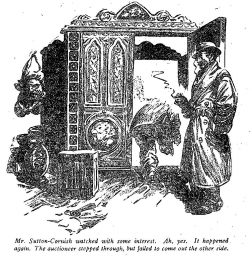 wrote: I love fantastic stories and have sketches of perhaps a dozen that I should love to see in print. They are not science fiction. My idea of the fantastic story–possibly a little out of date–is that everything is completely realistic except for the basic impossible premise. Both of those I have mentioned are concerned with vanishing or invisibility.
wrote: I love fantastic stories and have sketches of perhaps a dozen that I should love to see in print. They are not science fiction. My idea of the fantastic story–possibly a little out of date–is that everything is completely realistic except for the basic impossible premise. Both of those I have mentioned are concerned with vanishing or invisibility.
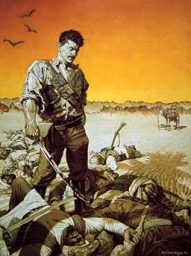 Robert E. Howard (Sprague de Camp Fan): REH was born in Peaster, Texas (just north of Weatherford). REH lived in various other places before his family settled in Cross Plains, but since Cross Plains is where he started his professional literary career, Cross Plains is all we’ll discuss at the moment. Cross Plains was once known as Turkey Creek. (Turkey Creek is a small stream that crosses the current Treadway Park.) Read More
Robert E. Howard (Sprague de Camp Fan): REH was born in Peaster, Texas (just north of Weatherford). REH lived in various other places before his family settled in Cross Plains, but since Cross Plains is where he started his professional literary career, Cross Plains is all we’ll discuss at the moment. Cross Plains was once known as Turkey Creek. (Turkey Creek is a small stream that crosses the current Treadway Park.) Read More
Atomic Werewolves and Man-Eating Plants
Sunday , 10, December 2023 Men's Adventure Magazines Leave a comment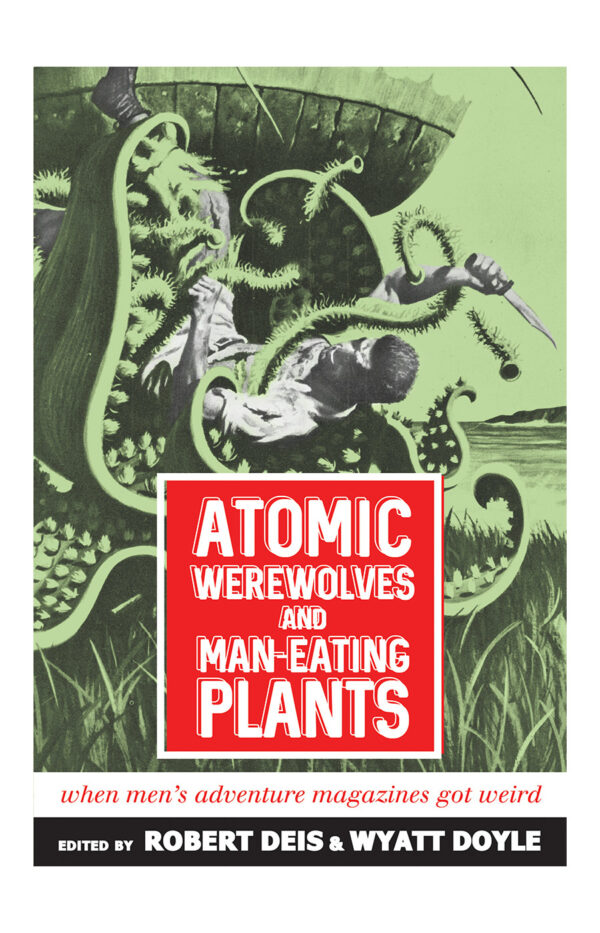 New Texture has been producing very well made books of contents from the men’s adventure magazines including story collections, themed anthologies, and art books. The newest is Atomic Werewolves and Man-Eating Plants. This is a themed anthology of weird fiction and “true stories” from 1953 to 1966.
New Texture has been producing very well made books of contents from the men’s adventure magazines including story collections, themed anthologies, and art books. The newest is Atomic Werewolves and Man-Eating Plants. This is a themed anthology of weird fiction and “true stories” from 1953 to 1966.
The first three entries are non-fiction pieces. Mike Chomko and Stefan Dziemianowicz’s pieces are nice short histories on the pulp magazine Weird Tales. Wyatt Doyle and Robert Deis cover the weird in the men’s adventure magazines. Read More
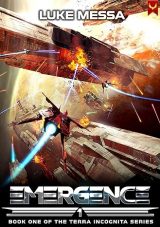 Emergence
Emergence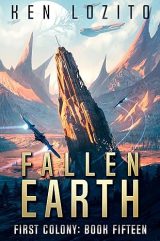 Fallen Earth
Fallen Earth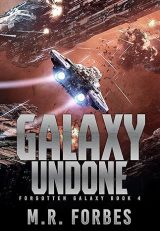 Galaxy Undone
Galaxy Undone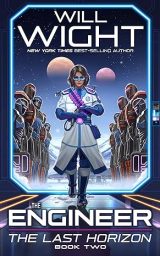 The Engineer
The Engineer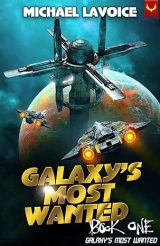 Galaxy’s Most Wanted
Galaxy’s Most Wanted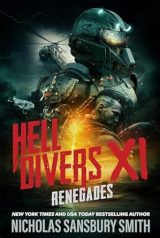 Hell Divers XI: Renegades
Hell Divers XI: Renegades